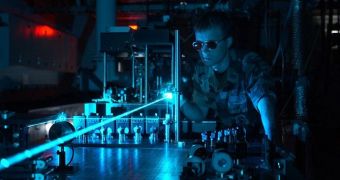Experts at the University of Notre Dame, in Paris, have recently managed to achieve new heights in nitride semiconductor research. They have been able to produce materials that are far more efficient than existing ones, thus opening the way for a completely new generation of ultraviolet (UV) lasers and light-emitting diodes (LEDs). The work was conducted by a team of electrical engineers, in scientist Debdeep Jena's laboratory at the university, Technology Review reports.
What the team basically accomplished was making nitride semiconductors exchange electricity much more efficiently than they used to. According to the team, the innovation could potentially be used in a very wide range of scientific fields, from high-density optical data storage to water treatment. The semiconductors could also have possible applications in medical-equipment sterilization procedures, credit-card security marks, paper money and a few biological imaging methods. At the basis of these processes lie lasers or diodes. With the new improvements, all the devices based on these light sources could function faster and more efficiently, Jena says.
The reason why nitride semiconductors were selected for this work was the fact that they had the widest spectral range of band gaps of all similar materials. This ability refers to the energy level that is required in order to move electrons through the materials, the team explains. In the case of materials such as aluminum gallium nitride and gallium nitride, these energy ranges extend from infrared wavelengths to the deep-ultraviolet portion of the electromagnetic spectrum. The group has also managed to get past a very common problem in such materials, namely the fact that they can be very ineffective at room temperatures.
In its experiments, the team used gallium nitride crystals. On the nitride surface, it managed to grow graded layers of magnesium-doped aluminum gallium nitride, which allows for better electric conductivity. Materials such as magnesium, which are called dopants, have to be regularly used in semiconductors, so as to make them capable of conducting electricity. Details of the new work appear in the January 1 issue of the top journal Science. The experts conclude by saying that their new growing method manages to activate the conductibility of the nitride semiconductors even at room temperature.

 14 DAY TRIAL //
14 DAY TRIAL //